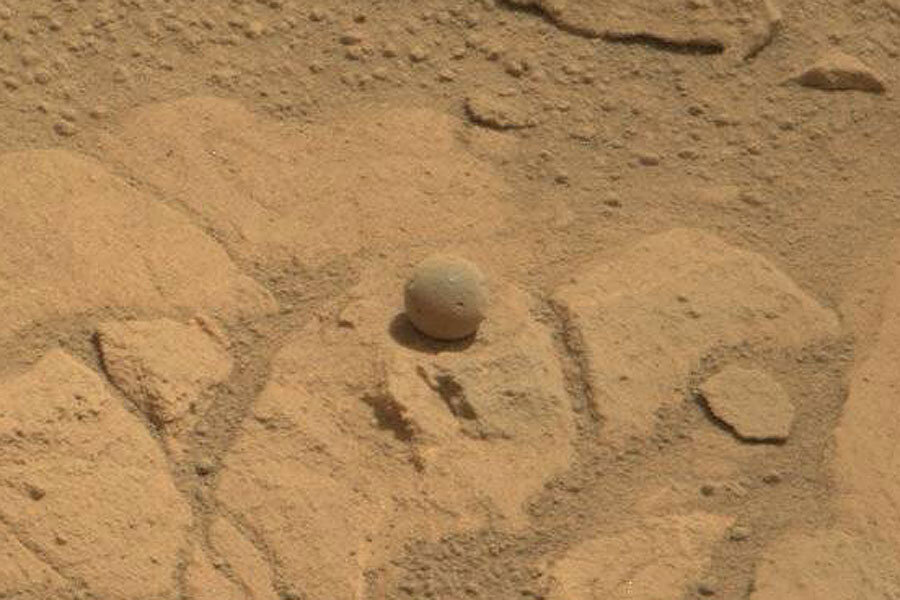Mysterious 'ball' on Mars: Where did it come from?
Loading...
It seems too round to be true — the Curiosity rover has found a ball-shaped object among the craggy rocks in its picture. This image was taken on Sol 746 of the rover’s mission on Mars, which so far has extended over two Earth years.
No, it’s not the leftover of a Martian baseball game and nor is it aliens. In fact, according to Discovery News (who is quoting NASA) it’s a kind of rock that shows evidence of water in the ancient past.
Ian O’Neill writes:
According to MSL scientists based at NASA’s Jet Propulsion Laboratory (JPL) in Pasadena, Calif., the ball isn’t as big as it looks — it’s approximately one centimeter wide. Their explanation is that it is most likely something known as a “concretion.” Other examples of concretions have been found on the Martian surface before — take, for example, the tiny haematite concretions, or “blueberries”, observed by Mars rover Opportunity in 2004 — and they were created during sedimentary rock formation when Mars was abundant in liquid water many millions of years ago.
Curiosity is now at the base of Mount Sharp (Aeolis Mons) — its main science goal — and scientists are hoping to find more signs of habitable environments as the rover slowly prepares for the climb up the slope. Mission managers will need to be careful as the rover has battered wheels from rougher terrain than expected.
The rover already has found other evidence of water in its landing site of Gale Crater, such as this ancient lakebed that could have supported life.
Elizabeth Howell is the senior writer at Universe Today. She also works for Space.com, Space Exploration Network, the NASA Lunar Science Institute, NASA Astrobiology Magazine and LiveScience, among others. Career highlights include watching three shuttle launches, and going on a two-week simulated Mars expedition in rural Utah. You can follow her on Twitter@howellspace or contact her at her website. Follow Elizabeth Howell on Google+.
Originally posted on Universe Today.





